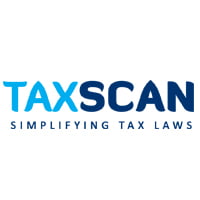Income Tax Addition for Turnover Mismatch Set Aside Due to Lack of Evidence: ITAT Deletes Disallowance under Section 40A(3) as Income was Estimated [Read Order]
The ITAT asserted that documentary support remains essential for deferring tax recognition to subsequent years. While granting substantial relief, the ITAT also emphasised procedural fairness by remanding issues that required factual verification
![Income Tax Addition for Turnover Mismatch Set Aside Due to Lack of Evidence: ITAT Deletes Disallowance under Section 40A(3) as Income was Estimated [Read Order] Income Tax Addition for Turnover Mismatch Set Aside Due to Lack of Evidence: ITAT Deletes Disallowance under Section 40A(3) as Income was Estimated [Read Order]](https://www.taxscan.in/wp-content/uploads/2025/04/ITAT-ITAT-Raipur-Income-Tax-Addition-Addition-for-Turnover-Mismatch-TAXSCAN.jpg)
In a recent ruling, the Raipur Bench of the Income Tax Appellate Tribunal (ITAT) partly allowed appeals for multiple assessment years by holding that where income is assessed on an estimated basis, separate disallowances, such as those under Section 40A(3), are not sustainable. The assessee, Nishant Jain, a civil contractor engaged in government infrastructure projects, had filed appeals for Assessment Years (AY) 2014–15, 2017–18, and 2018–19. The additions made by the lower authorities varied for each year and were based on distinct grounds.
Regarding AY 2014–15, the Assessing Officer (AO) made an addition of ₹1.36 crore, citing a mismatch between the turnover as reflected in Form 26AS and the assessee’s books of account. According to the AO, the assessee failed to reconcile the discrepancy attributable to mobilization and machinery advances. The CIT(A) upheld the addition, stating that the assessee failed to furnish sufficient evidence showing that the difference had been accounted for in subsequent years.
Clear all Your Doubts on RCM, TCS, GTA, OIDAR, SEZ, ISD Etc... Click Here
Similarly, in the matter concerning the 2017-17 AY survey proceedings under Section 133A, the assessee offered to declare net profit at 8% of the turnover in light of discrepancies found during the survey, such as cash expenses, unsubstantiated purchases, and related-party payments. Despite this disclosure, the AO proceeded to make several disallowances like ₹18.08 lakh on account of alleged unexplained investment in a building project, ₹3.43 lakh for turnover discrepancy based on Form 26AS, ₹6 lakh disallowance under Section 40A(3) for cash payment and ₹84,398 for delayed ESI/PF deposits. These additions were later confirmed by the CIT(A)
The ITAT observed that the addition of ₹1.36 crore stemmed from advances received from a government agency, which the assessee claimed were accounted for in the following year. While noting that the CIT(A) had taken cognizance of this argument, the Tribunal found that the explanation warranted verification. The matter was remanded to the AO for fresh consideration, with the direction of deleting the addition if the claim was substantiated.
The assessee had initially accepted a valuer’s report and agreed to disclose ₹18.08 lakh and ₹7.33 lakh, respectively, as unexplained investments. However, he later argued that his declaration of higher net profit covered these amounts. The ITAT rejected this claim, noting that the additional profit was offered to address other discrepancies and could not be stretched to cover capital investments. The additions were thus sustained.
Want a deeper insight into the Income Tax Bill, 2025? Click here
The ITAT, consisting of Arun Khodpia and Ravish Sood (Judicial member), further deleted both disallowances made under Section 40A(3), holding that once the assessee’s income had been estimated on a presumptive basis at 8% of turnover, no further disallowance was justified. It cited the decision in CIT v. Smt. Santosh Jain [(2008) 296 ITR 324 (P&H)], which established that the estimation of income subsumes minor discrepancies and cash transactions unless separately claimed. The disallowance for delayed ESI/PF payments was upheld, following the Supreme Court ruling in Checkmate Services Pvt. Ltd. v. CIT.
To Read the full text of the Order CLICK HERE
Support our journalism by subscribing to Taxscan premium. Follow us on Telegram for quick updates
Nishant Jain vs The Assistant Commissioner of Income Tax , 2025 TAXSCAN (ITAT) 719 , ITA Nos. 510, 511 & 512/RPR/2024 , 20 January 2025 , S/shri Sunil Kumar Agrawal, Vimal Kumar Agrawal , Smt. Anubhaa Tah Goel

